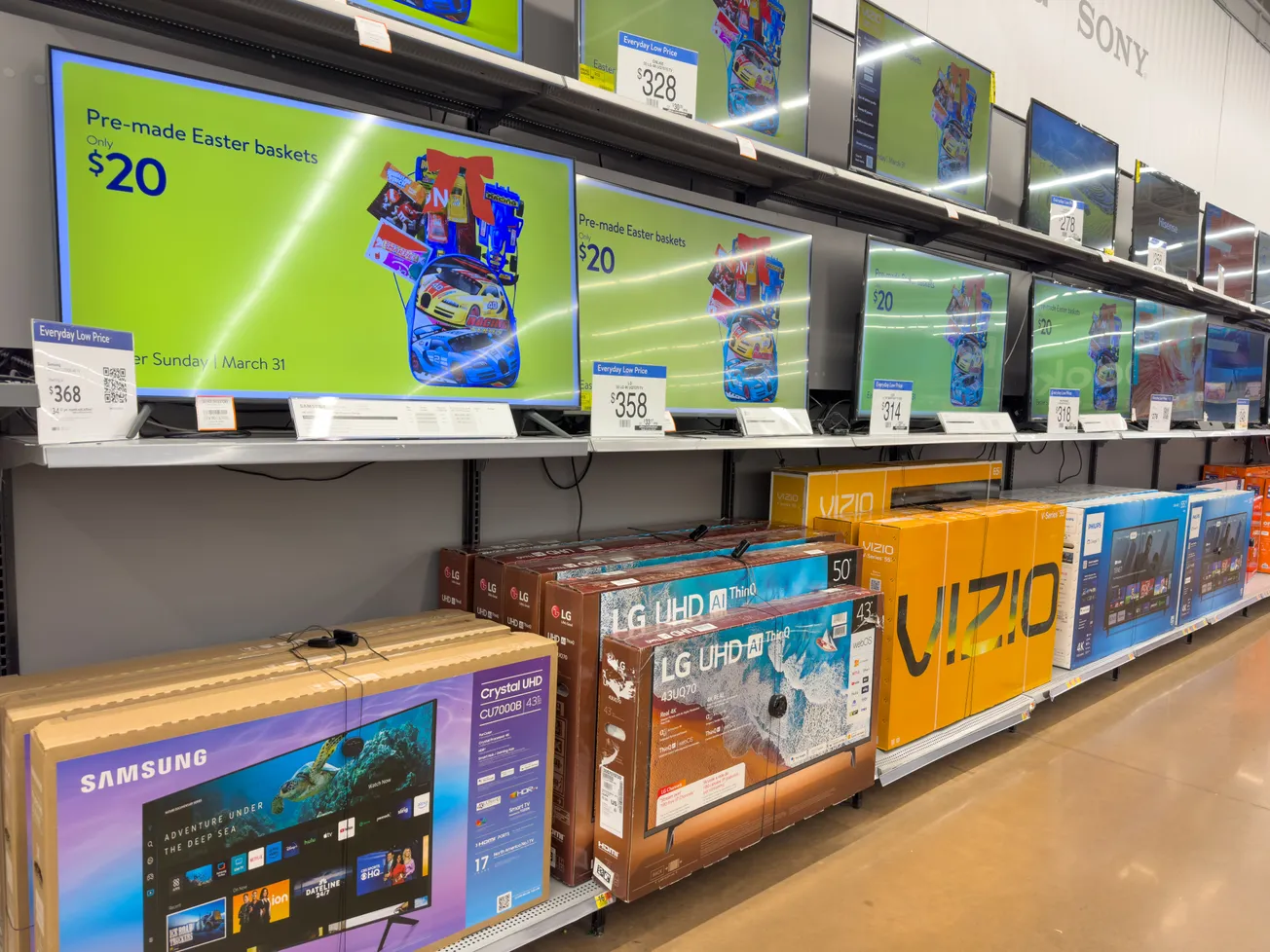Walmart has completed its $2.3 billion acquisition of Vizio, marking a significant step in its ambition to expand its advertising capabilities and retail network.
This acquisition reflects Walmart's intention to merge retail operations with digital media, leveraging Vizio's widely used SmartCast platform to gain an edge in the competitive retail and advertising sectors.
Vizio's SmartCast operating system, which powers millions of smart TVs across the United States, has seen tremendous growth in recent years.
With over 19 million active accounts and a 400% increase in user engagement since 2018, SmartCast has become a key player in the ad-supported streaming market. The platform’s integration into Walmart’s retail and advertising ecosystem offers new opportunities for both companies.
Through the acquisition, Walmart plans to utilize Vizio’s SmartCast technology to enhance the reach and effectiveness of Walmart Connect, its retail media division.
Walmart Connect has been central to Walmart’s advertising strategy, offering brands a platform to connect directly with Walmart’s customers. By integrating SmartCast, Walmart can provide advertisers with data-driven insights and innovative ways to engage consumers via connected TVs.
Expanding Advertising Capabilities
The advertising landscape has shifted dramatically in recent years, with connected TV becoming a crucial medium for brands to reach their audiences. According to eMarketer, CTV ad spending in the U.S. is projected to exceed $25 billion in 2024.
Walmart’s acquisition of Vizio positions it to tap into this lucrative market by offering advertisers access to Vizio’s robust CTV ecosystem.
Vizio’s advertising business, particularly its Inscape data analytics arm, provides deep insights into viewer behaviors and preferences. Walmart can use this data to create more personalized and targeted advertising campaigns.
Additionally, Walmart’s extensive network of suppliers and brands can benefit from the integration, using Vizio’s platform to showcase products and promotions directly to consumers’ living rooms.
Enhancing Retail Experiences
Beyond advertising, Walmart aims to integrate its e-commerce capabilities with Vizio’s SmartCast platform to offer innovative shopping experiences. Features such as shoppable ads, where viewers can purchase products directly from their TVs, are expected to play a significant role in Walmart’s strategy.
This approach not only drives online sales but also strengthens Walmart’s omnichannel presence by bridging the gap between physical and digital retail.
For example, a viewer watching a cooking show on Vizio’s SmartCast could see an advertisement for kitchen appliances sold by Walmart. With a few clicks on their remote, they could purchase the item and have it delivered to their doorstep.
Such seamless shopping experiences align with changing consumer preferences and position Walmart as a leader in retail innovation.
Competing with Industry Giants
The acquisition also positions Walmart to compete more effectively with industry leaders like Amazon and Google, which have successfully integrated retail and media platforms.
Amazon’s Fire TV and Google’s Chromecast, for instance, have become key components of their respective advertising ecosystems.
By acquiring Vizio, Walmart gains a similar foothold in the connected TV market, enabling it to compete on equal footing.
Moreover, Walmart’s move underscores the growing convergence of retail and media. Companies are increasingly recognizing the value of combining customer data from retail transactions with insights from digital media consumption.
This integration allows for more effective advertising and better customer experiences, creating a win-win scenario for retailers, advertisers, and consumers.
The Role of Data and Privacy
One of the most significant advantages of Walmart’s acquisition is access to Vizio’s extensive data capabilities.
Vizio’s Inscape platform collects anonymized viewing data from millions of connected TVs, providing valuable insights into consumer behavior. This data can be combined with Walmart’s own customer data to create a comprehensive view of shopping and viewing habits.
However, the use of such data raises questions about privacy and consumer consent. Walmart will need to navigate these concerns carefully to maintain trust with its customers. Transparency and compliance with data protection regulations will be crucial as Walmart integrates Vizio’s data capabilities into its operations.
Broader Implications for the Retail Industry
Walmart’s acquisition of Vizio is likely to have ripple effects across the retail and advertising industries.
For other retailers, this move highlights the importance of investing in digital media and technology to stay competitive. As more consumers turn to streaming services and connected devices, the ability to reach them through these channels will become increasingly critical.
Additionally, the acquisition could spur further consolidation in the industry. Companies with strong media or technology assets may become acquisition targets as retailers look to enhance their digital capabilities.
This trend could reshape the competitive landscape, creating new opportunities and challenges for both retailers and technology providers.
Walmart’s Strategic Vision
Walmart’s acquisition of Vizio aligns with its broader strategic vision of becoming a tech-enabled retail leader.
Over the past decade, Walmart has made significant investments in technology and innovation, from its acquisition of Jet.com to its development of advanced supply chain capabilities. The Vizio acquisition represents the next step in this journey, enabling Walmart to leverage cutting-edge technology to enhance its offerings and better serve its customers.
While the acquisition presents numerous opportunities, it also comes with challenges. Integrating Vizio’s operations into Walmart’s ecosystem will require careful planning and execution. Ensuring a seamless transition for Vizio’s existing customers and partners will be critical to maintaining trust and avoiding disruptions.
Walmart will need to address the competitive pressures from other tech and retail giants.
Amazon, for instance, has a well-established presence in the connected TV market, while Google and Apple continue to invest heavily in their media and advertising platforms. Walmart will need to differentiate itself by offering unique value propositions and staying ahead of industry trends.









